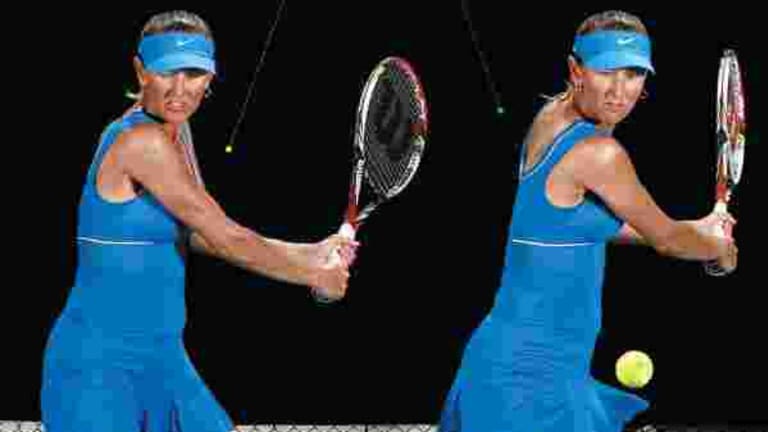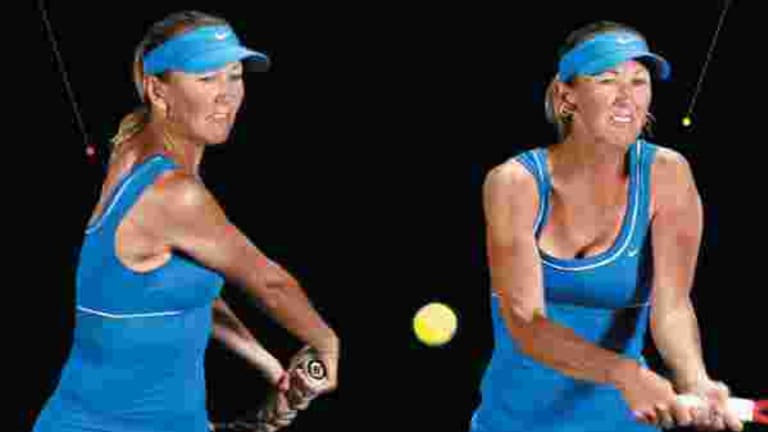1. A great two-handed backhand starts with the perfect set-up. First, the grip: The most commonly used grips are the Continental for your dominant hand and an Eastern forehand grip for your non-dominant hand. As the ball arrives, split-step and then execute your unit turn, shown here. Your shoulders and your racquet will turn together. The leg closest to the incoming ball should step out a little as you turn, so you don’t close yourself off to the ball. You’ll need space to step into the shot.
2. How much shoulder turn is ideal? Enough so that you have to look over your dominant shoulder at the incoming ball. As you prepare to hit this shot, all of your weight should be on your back foot, ready to transfer to your front foot. Take your racquet back above the level of the ball (10 o’clock or 2 o’clock, whichever is easier for you to visualize, is an ideal height). Your shoulders should be level and your knees slightly bent.


